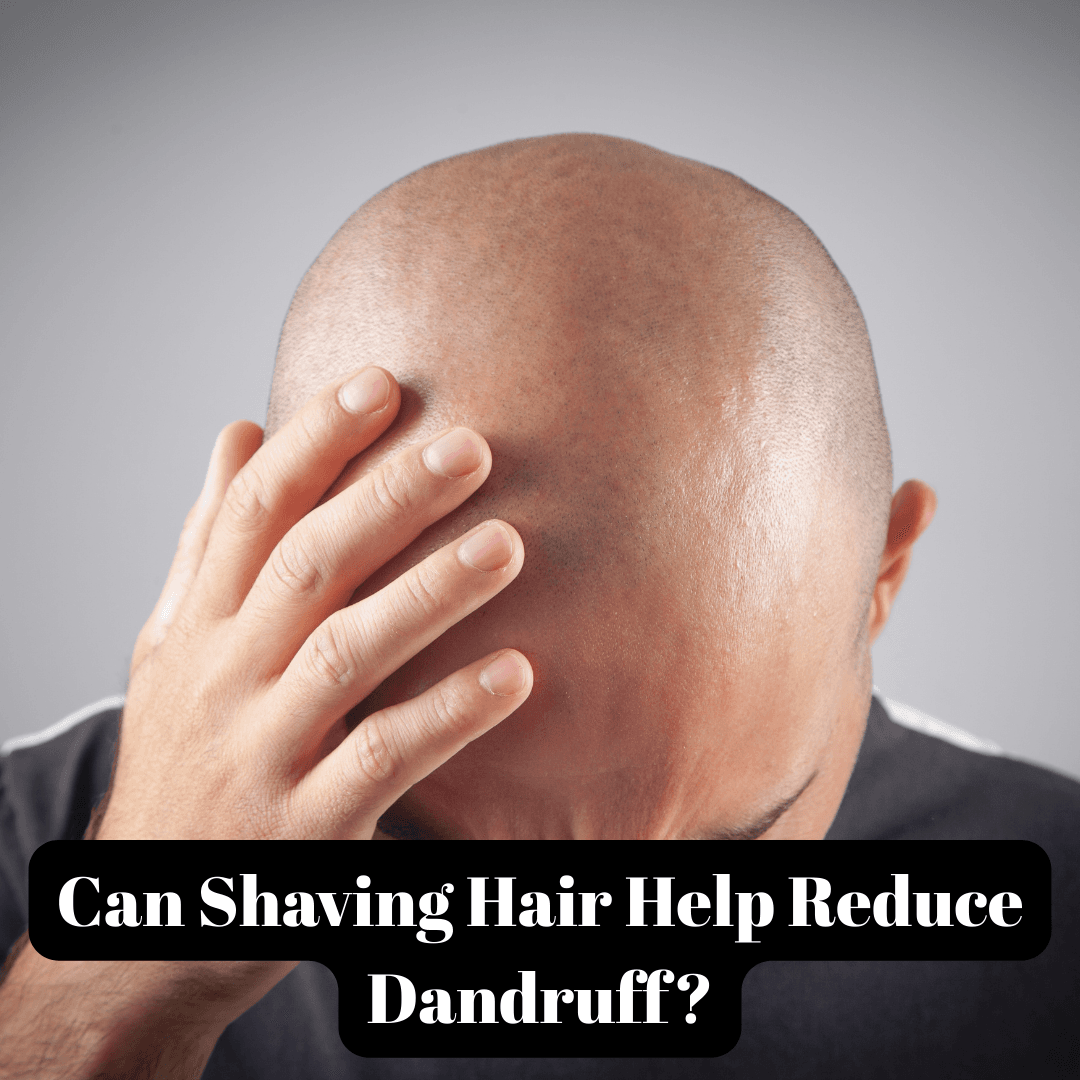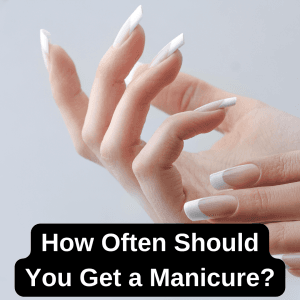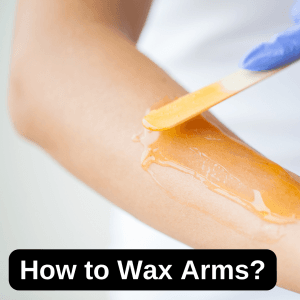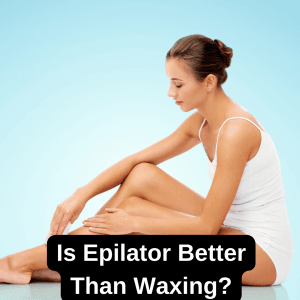Dandruff can be an ongoing struggle for many people, whether they have long hair, short hair, or even a shaved head. But does shaving your hair help with dandruff? Let’s dive into the truth behind shaving hair to manage dandruff, explore effective home remedies, and find out how to control flakes without using shampoo.
Can Shaving Hair Help Reduce Dandruff?
When it comes to dandruff, many believe that shaving the hair can solve the problem. The idea is that without hair, there’s less surface area for flakes to cling to, making the scalp easier to clean and treat. However, while shaving can make dandruff less visible, it doesn’t address the root cause.
Dandruff is primarily caused by an overgrowth of a yeast-like fungus called Malassezia, which feeds on the oils on your scalp. It’s not necessarily related to the length of your hair. So even with a shaved or bald head, the scalp can still produce oils, dead skin cells, and yeast that contribute to dandruff.
Shaving your hair can help reduce the appearance of dandruff but won’t eliminate it entirely. It’s crucial to treat the underlying scalp condition to keep dandruff under control.
As outlined by the UK’s National Health Service (NHS), dandruff typically appears as white or grey flakes on the scalp and may be more visible in darker hair.
How to Shave Your Head If You Have Dandruff: Best Practices
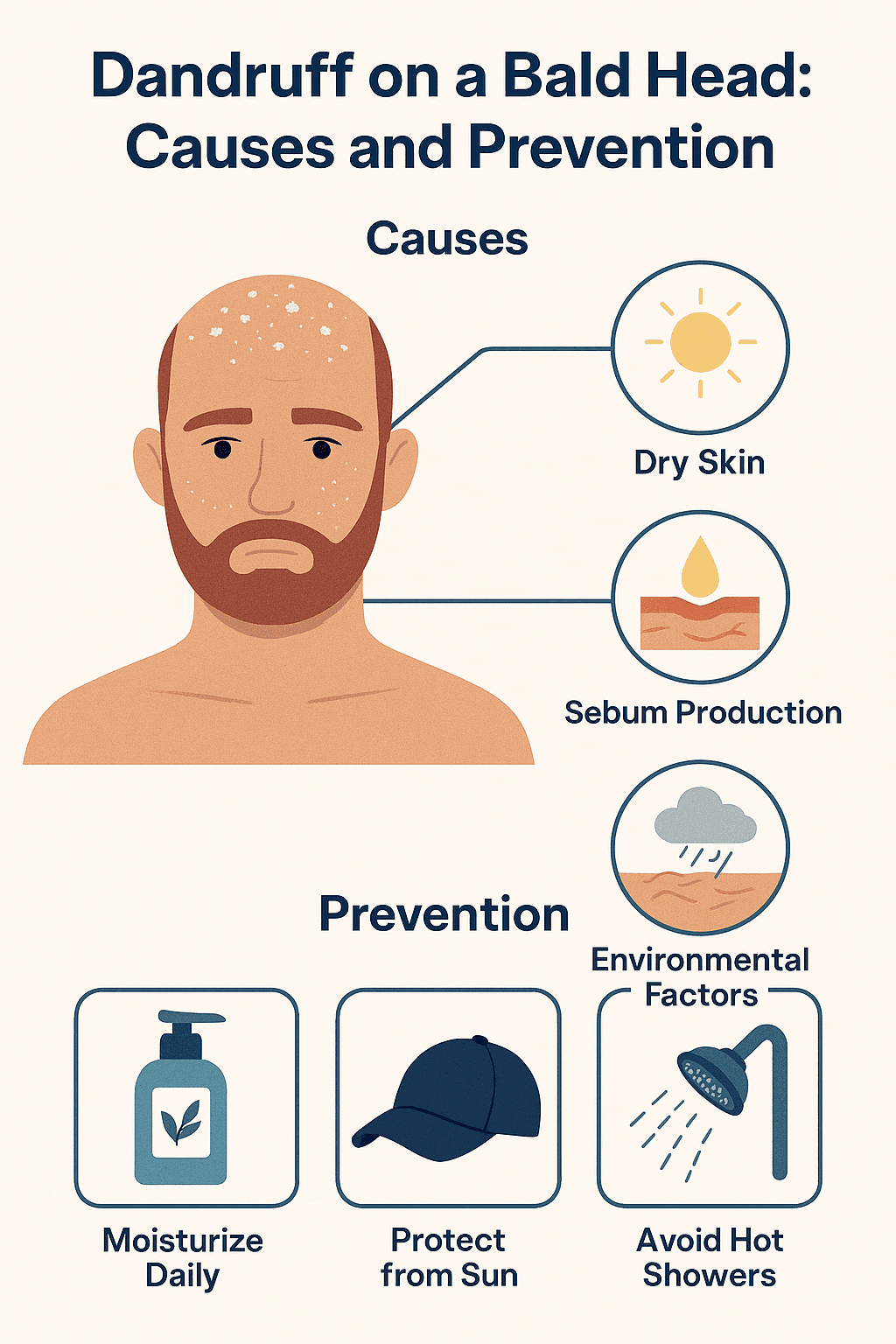
If you decide to shave your head to manage dandruff, there are some steps you can take to prevent irritation and reduce flakiness:
Exfoliate Before Shaving: Use a gentle scrub or a soft brush to exfoliate the scalp. This helps remove dead skin cells, making shaving smoother and less irritating.
Use a Clean Razor: A clean, sharp razor will reduce the risk of infection and irritation, which can worsen dandruff.
Apply a Moisturizing Shaving Cream: Opt for shaving creams that are gentle on the scalp. Avoid products with alcohol, which can dry out the skin.
Moisturize After Shaving: After shaving, apply a hydrating lotion or oil to the scalp to prevent dryness and flaking. Look for ingredients like aloe vera or jojoba oil.
The American Academy of Dermatology Association recommends gentle scalp cleansing and moisturizing as the first step in managing dandruff, especially for mild cases that can be treated at home.
Dandruff on a Bald Head: Causes and Prevention
It might surprise you, but even a completely bald head can experience dandruff. This is because dandruff is not related to hair but to the scalp’s health. When the scalp is dry or irritated, it can start to flake.
For a clinical overview of dandruff and its relation to seborrheic dermatitis, the American Osteopathic College of Dermatology offers a detailed explanation based on medical expertise.
According to the National Eczema Association, seborrheic dermatitis is a chronic skin condition that often mimics dandruff but requires different management strategies.
Why Do Bald People Still Get Dandruff?
Dry Skin: Shaving can strip the scalp of its natural oils, causing dryness and flakiness.
Sebum Production: Your scalp continues to produce sebum (oil) even if there’s no hair. This oil can mix with dead skin cells, leading to dandruff.
Oil overproduction isn’t just a facial issue—this breakdown of oily skin on the nose helps you understand sebaceous activity that also affects the scalp.
Environmental Factors: Cold, dry weather and harsh wind can dry out the scalp, exacerbating dandruff on a bald head.
How to Prevent Dandruff on a Bald Scalp
Dandruff can be just as bothersome on a bald scalp as it is on a full head of hair. Without the natural protection that hair provides, a shaved or bald scalp can become more prone to dryness, irritation, and flaking. Here’s a detailed guide on how to prevent dandruff and keep your scalp healthy:
1. Moisturize Daily to Keep the Scalp Hydrated
A well-hydrated scalp is essential to prevent dryness, which can lead to dandruff. When the scalp lacks moisture, it becomes prone to flaking and irritation, which can worsen dandruff over time. Here are some tips for effective moisturizing:
Choose the Right Moisturizer: Opt for a lightweight, non-comedogenic moisturizer specifically formulated for the scalp. Non-comedogenic products won’t clog your pores, reducing the risk of buildup and irritation.
Natural Oils: Consider using natural oils like jojoba, argan, or almond oil. These oils are rich in essential fatty acids that can nourish the scalp, providing a protective barrier that locks in moisture. Massage a few drops into your scalp after showering when your skin is still slightly damp for better absorption.
Aloe Vera Gel: For those who prefer a non-oily option, pure aloe vera gel can be an excellent natural moisturizer. It not only hydrates but also soothes any irritation, reducing the chances of dandruff flare-ups.
Make it a part of your nightly routine to apply a thin layer of moisturizer before bed to let your scalp heal and hydrate overnight.
2. Protect Your Scalp from Sun Exposure
When you shave your head, your scalp loses its natural protection against the sun’s harsh rays. Direct sun exposure can dry out the scalp, cause sunburn, and exacerbate dandruff. Here’s how to protect your bald scalp from sun damage:
Apply Sunscreen Daily: Use a gentle, broad-spectrum sunscreen with at least SPF 30 to protect your scalp from UV damage. Look for sunscreens that are non-greasy and won’t clog your pores. Mineral sunscreens containing zinc oxide or titanium dioxide are great options as they are less likely to irritate sensitive skin.
Wear a Hat or Cap: If you’re going to be outdoors for extended periods, wearing a hat is one of the best ways to shield your scalp from the sun. Opt for breathable materials like cotton or linen to prevent sweat buildup, which can contribute to dandruff.
Use an After-Sun Gel: If your scalp does get sunburned, applying a cooling aloe vera gel or a moisturizer with anti-inflammatory ingredients like chamomile can help reduce redness and irritation.
Even on cloudy days, UV rays can penetrate through, so don’t skip sunscreen. Reapply every few hours if you’re spending the day outside.
3. Avoid Hot Showers to Preserve Natural Oils
Hot showers might feel relaxing, but they can strip away the natural oils that keep your scalp hydrated. When these oils are removed, your scalp can become dry and flaky, worsening dandruff. Here’s how to adjust your shower routine to protect your scalp:
Use Lukewarm Water: Instead of hot water, opt for lukewarm or cool water to wash your scalp. This helps preserve the scalp’s natural moisture barrier, reducing dryness.
Limit Shower Time: Spending too much time in the shower can also contribute to scalp dryness. Aim for a quick, 5-10 minute shower to minimize the impact on your skin’s moisture levels.
Use a Gentle, Sulfate-Free Cleanser: If you need to clean your scalp, choose a gentle, sulfate-free cleanser designed for sensitive skin. Harsh shampoos can strip away essential oils, leaving your scalp even drier. Alternatively, you can opt for a mild, moisturizing body wash if you don’t want to use shampoo.
After washing, pat your scalp dry with a soft towel instead of rubbing vigorously. This helps prevent irritation and maintains the scalp’s natural moisture balance.
Scalp Care Tips for a Healthy, Flake-Free Bald Head
By incorporating these practices into your daily routine, you can effectively prevent dandruff on a bald scalp. Regular hydration, sun protection, and gentle cleansing will keep your scalp healthy, smooth, and flake-free. Scalp flaking isn’t the only confidence-shaking skin issue—this guide on how to get rid of pimples offers smart, non-drying approaches you can adapt to other areas like the forehead or back of the head.
Apple Cider Vinegar (ACV): The Natural Scalp Balancer
Apple cider vinegar is well-known for its potent antifungal and antibacterial properties, making it an excellent natural remedy for dandruff. The acetic acid in ACV helps to break down the build-up of dead skin cells on the scalp, while also balancing the scalp’s pH level. This acidic environment is less favorable for the growth of dandruff-causing fungi.
How to Use Apple Cider Vinegar for Dandruff:
- Step 1: Dilute one part apple cider vinegar with two parts water. This dilution is essential to prevent irritation, especially if you have sensitive skin.
- Step 2: Pour the solution into a spray bottle for easy application.
- Step 3: Spray or gently pour the mixture onto your scalp, ensuring it covers all affected areas.
- Step 4: Massage the solution into your scalp for 1-2 minutes to enhance absorption.
- Step 5: Let it sit for 10-15 minutes. This allows the vinegar to work its magic by breaking down excess oils and flakes.
- Step 6: Use a damp cloth to wipe away the residue or rinse lightly with cool water.
For best results, use this treatment twice a week. ACV also helps reduce itchiness and leaves your scalp feeling refreshed.
Coconut Oil: The Deeply Nourishing Antifungal Solution
Coconut oil is more than just a moisturizer; it’s a natural antifungal agent that can significantly reduce dandruff. Its medium-chain fatty acids, like lauric acid, penetrate deep into the scalp, providing lasting hydration while fighting off the yeast (Malassezia) that causes dandruff. Coconut oil is also packed with antioxidants that soothe irritation and reduce inflammation.
How to Use Coconut Oil for Dandruff Relief:
- Step 1: Warm 2-3 tablespoons of extra virgin coconut oil until it’s in a liquid state, but not too hot.
- Step 2: Section your hair (if you have any) or apply directly to your shaved scalp, massaging it gently in circular motions to promote blood circulation.
- Step 3: Leave the oil on your scalp overnight for maximum absorption. To avoid staining your pillow, cover your head with a soft towel or a shower cap.
- Step 4: The next morning, lightly rinse with lukewarm water or wipe with a damp cloth if you’re avoiding shampoo.
For added benefits, mix a few drops of essential oils like lavender or peppermint into the coconut oil. These oils have additional antifungal and soothing properties.
Aloe Vera: The Ultimate Hydration and Cooling Remedy
Aloe vera is renowned for its cooling, hydrating, and anti-inflammatory properties, making it an ideal treatment for dry, itchy, and flaky scalps. It contains enzymes that promote the removal of dead skin cells and stimulate skin repair. Additionally, aloe vera is gentle, making it suitable for sensitive scalps.
How to Use Aloe Vera for Dandruff Control:
- Step 1: Use fresh aloe vera gel extracted directly from an aloe leaf. If fresh leaves are not available, opt for 100% pure aloe vera gel from a trusted source.
- Step 2: Apply a generous amount of the gel to your scalp, ensuring even coverage over all affected areas.
- Step 3: Gently massage the gel into your scalp and let it sit for 30-45 minutes. This allows the enzymes to break down flakes and soothe irritation.
- Step 4: Wipe away the gel with a damp cloth or rinse lightly with cool water.
For an extra boost, combine aloe vera with a teaspoon of honey. Honey has natural antimicrobial properties that enhance the effectiveness of the treatment.
Tea Tree Oil: The Powerful Antifungal Elixir
Tea tree oil is a powerhouse when it comes to treating dandruff due to its strong antifungal, antibacterial, and anti-inflammatory properties. It helps reduce the yeast that causes dandruff while also soothing inflammation and reducing scalp itchiness. However, because tea tree oil is highly concentrated, it’s essential to dilute it before use.
How to Use Tea Tree Oil for Dandruff:
- Step 1: Mix 5-7 drops of tea tree oil with a tablespoon of a carrier oil, such as jojoba oil, olive oil, or coconut oil. This dilution prevents potential irritation from the pure oil.
- Step 2: Apply the mixture to your scalp, focusing on areas where dandruff is most prominent.
- Step 3: Massage the oil into your scalp using your fingertips in small, circular motions. This helps improve blood circulation and ensures better absorption.
- Step 4: Let it sit for about 10-20 minutes before wiping off with a damp cloth. You can also leave it on overnight for a deeper treatment.
- Step 5: If needed, rinse lightly with lukewarm water the next morning.
For those with sensitive scalps, you can add a few drops of tea tree oil to aloe vera gel for a milder, soothing treatment.
Additional Tips for Maintaining a Healthy, Dandruff-Free Scalp
Hydrate from Within: Drinking plenty of water helps keep your scalp hydrated from the inside out.
Maintain a Balanced Diet: Eating foods rich in omega-3 fatty acids, zinc, and vitamins can help reduce scalp inflammation and dryness.
Avoid Harsh Hair Products: Switch to sulfate-free and paraben-free products to prevent stripping your scalp of its natural oils.
By incorporating these natural remedies into your routine, you can effectively manage dandruff without relying on harsh shampoos or chemicals. These methods not only address dandruff but also promote overall scalp health, ensuring a flake-free, comfortable scalp.
Natural tonics like rose water may not treat dandruff directly, but its scalp-soothing benefits make it a worthy addition to your post-shave routine.
Just like managing scalp flaking, small grooming concerns—like getting rid of a unibrow—can play a big role in feeling clean and confident.
How to Remove Dandruff Without Washing Hair
If you’re trying to reduce dandruff without washing your hair frequently, here are some methods that can help:
Use a Scalp Brush: A scalp brush can help remove flakes and stimulate blood circulation. Brush gently to avoid irritation.
Dry Baking Soda Treatment: Sprinkle a small amount of baking soda onto your scalp, massage it in, and brush off the excess. Baking soda absorbs excess oils and helps reduce flakes.
Baby Powder: Baby powder can absorb oil and reduce the appearance of dandruff without washing. Sprinkle lightly, then brush it out thoroughly.
Frequently Asked Questions
Disclaimer: The information provided in this article is for educational purposes only and should not be considered medical advice.
For more well-researched guides on scalp care, shaving, and natural remedies, feel free to explore Epilation World—a trusted source for personal care knowledge.

Our team consists of certified professionals with over 17 years of experience in laser hair removal, skincare, and personal care. With advanced training in diode laser, IPL, waxing, and skin health, we combine clinical precision with real-world expertise to deliver reliable, evidence-based guidance.
Every article is carefully created and reviewed by our experts to ensure safety, clarity, and scientific accuracy. Our work has helped thousands choose safe, effective hair removal solutions tailored to their unique needs.
Trusted expertise. Real results. That’s our promise.

